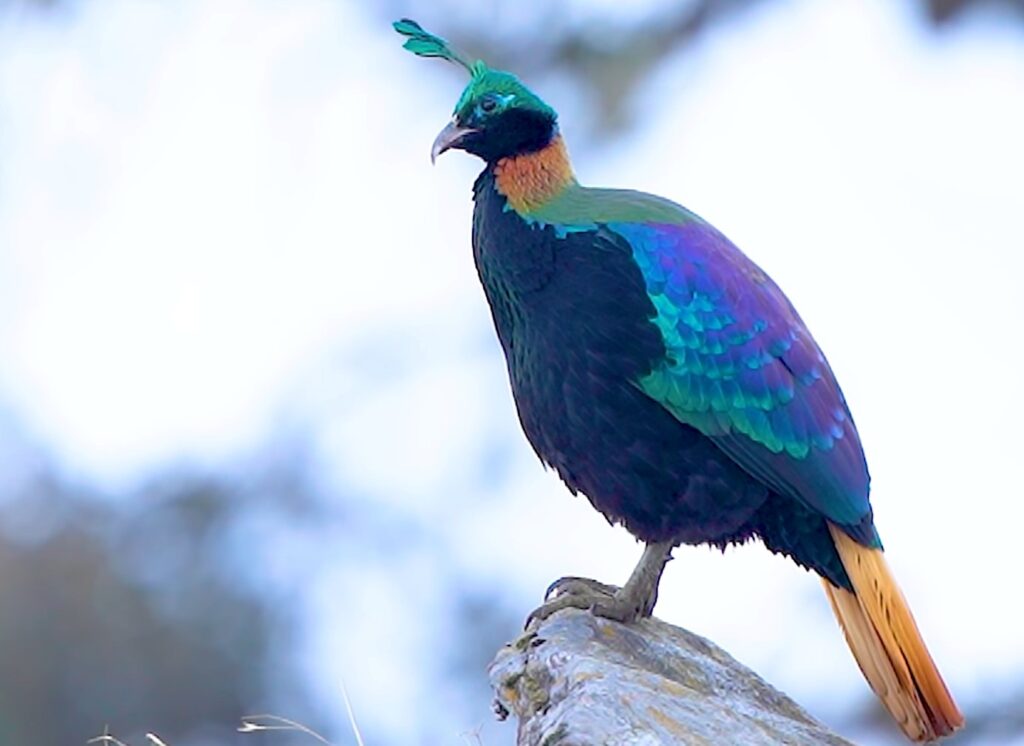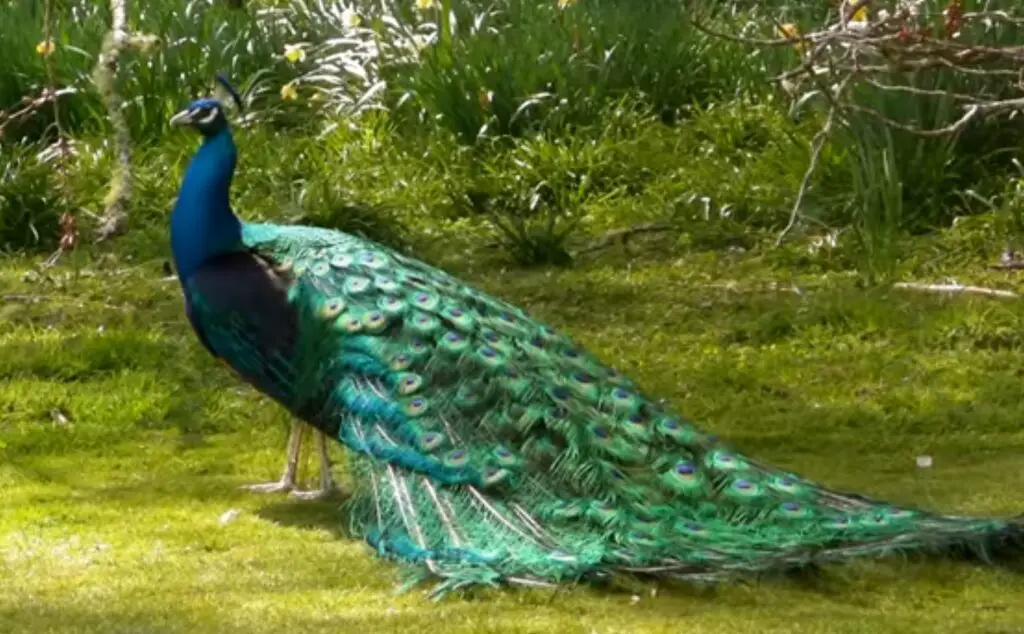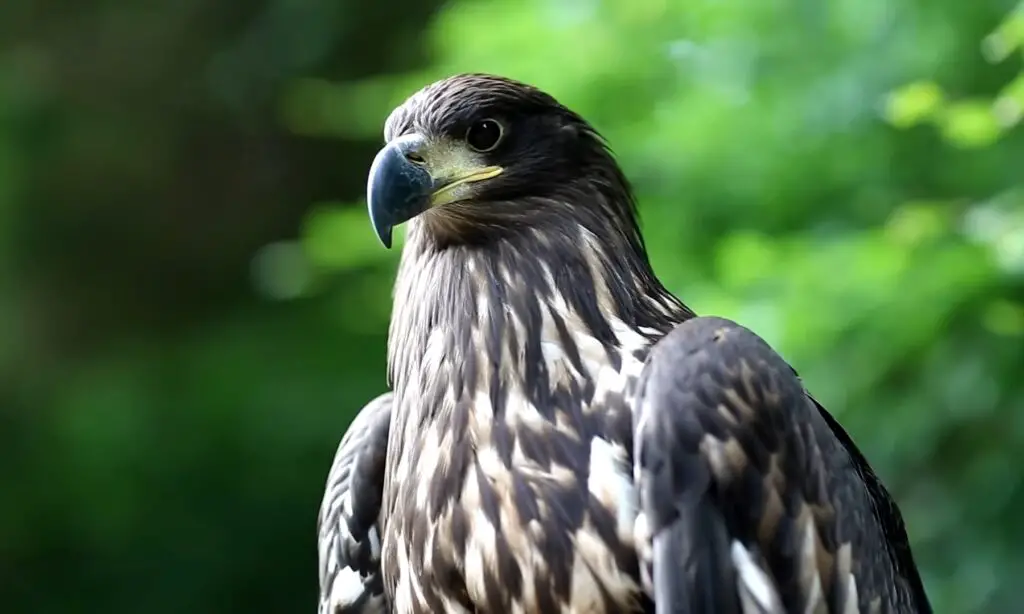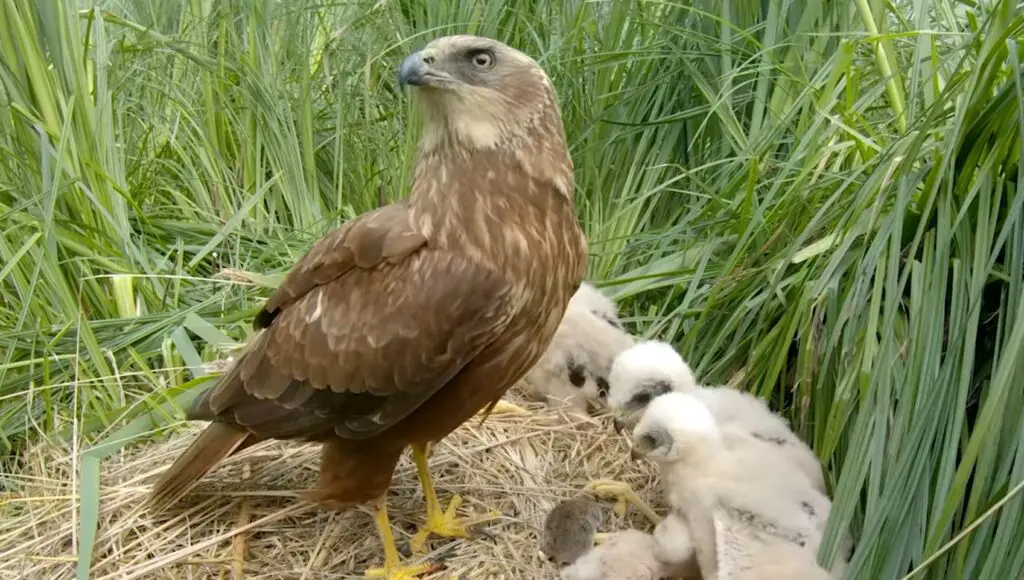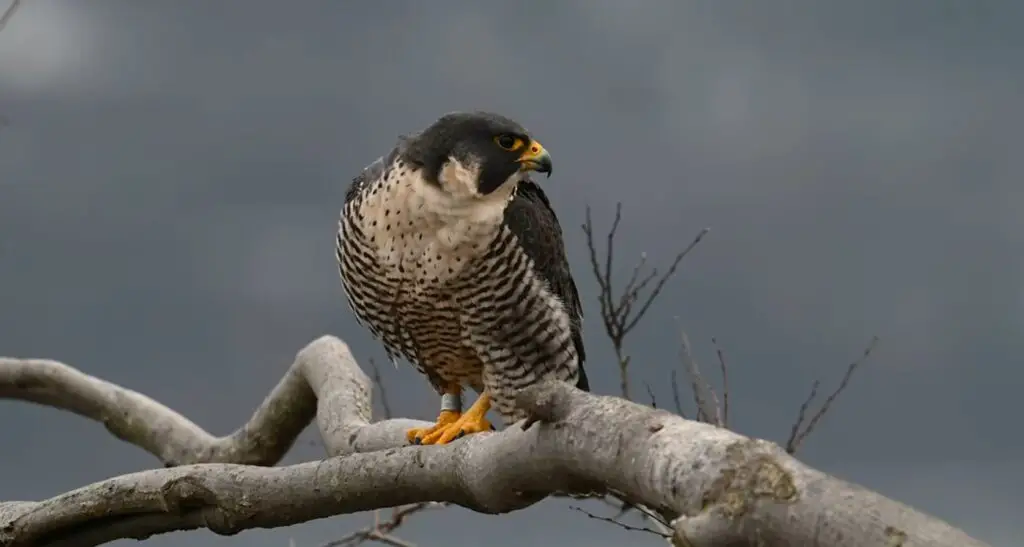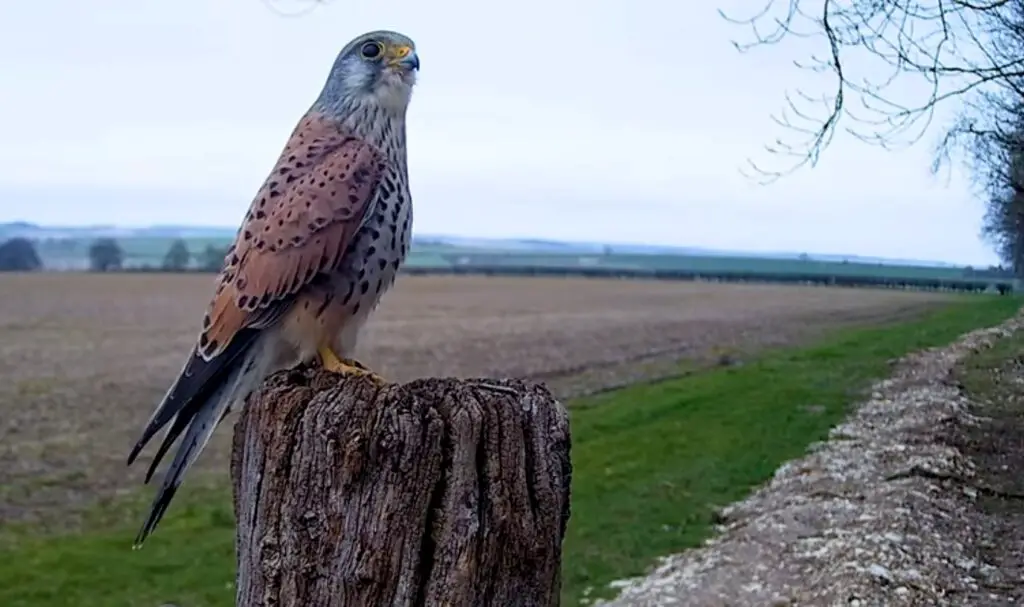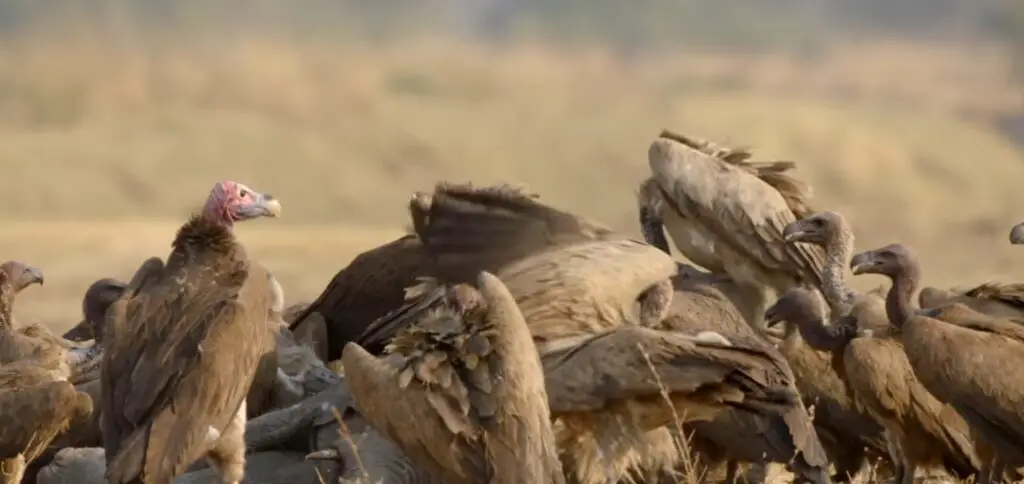The Himalayan monal, also known as the Impeyan monal, is a strikingly beautiful bird found in the Himalayan region of Pakistan, India, Nepal, Bhutan, and China. It is considered one of the most colorful pheasants in the world, with a vibrant mix of blue, green, purple, and red feathers that create a stunning iridescent effect.
Himalayan Monal Pheasant Size
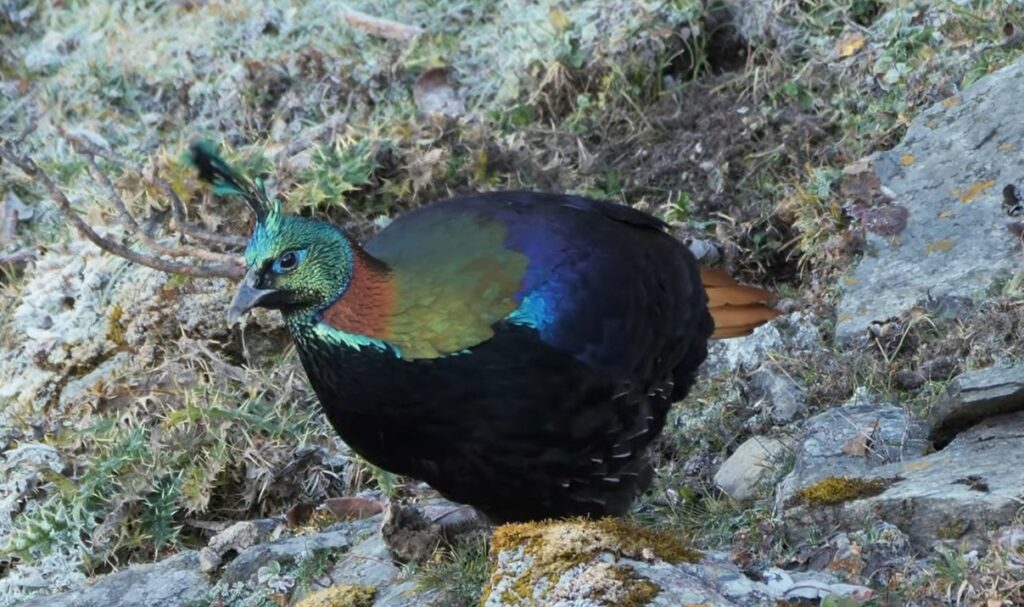 Male Himalayan Monal
Male Himalayan Monal
The Himalayan Monal is a large bird, with males growing up to 70 cm in length and weighing around 2 kg. The males are more brightly colored than the females, with a metallic green head, a chestnut-colored body, and a long, iridescent blue-green tail. The females are brown with white spots, and have a shorter tail.
Himalayan Monal pheasants (Lophophorus impejanus) are large and colorful birds native to the Himalayas. They are considered one of the most beautiful pheasant species in the world. Adult male Monals are larger than females. Here are their approximate size measurements:
- Adult Male Himalayan Monal:
- Length: About 60-70 cm (24-28 inches)
- Wingspan: Approximately 65-75 cm (26-30 inches)
- Weight: Around 2-2.5 kg (4.4-5.5 pounds)
- Adult Female Himalayan Monal:
- Length: Approximately 53-62 cm (21-24.5 inches)
- Wingspan: About 50-60 cm (20-24 inches)
- Weight: Around 1.5-2 kg (3.3-4.4 pounds)
The male Monals are particularly striking, with their vibrant iridescent plumage of metallic green, blue, copper, and gold colors. Females, on the other hand, have more subdued plumage with a mottled appearance to provide better camouflage during nesting.
These impressive birds are known for their elaborate courtship displays, and their presence adds a touch of exotic beauty to the high-altitude forests and grasslands of the Himalayan region.
The Himalayan monal is a solitary bird that is usually found in the high-altitude forests of the Himalayas, at elevations of 2,500 to 4,500 meters above sea level. It feeds on a variety of plants, seeds, insects, and small animals, and is known for its distinctive, high-pitched call that can be heard from a distance.

What is special about monal?
Himalayan Monal pheasants are truly special and unique birds, and there are several aspects that make them stand out:
Stunning Plumage: Male Monals are renowned for their incredibly vibrant and iridescent plumage, which features a kaleidoscope of colors, including metallic greens, blues, coppers, and golds. Their striking appearance has earned them the title of “the most beautiful pheasant in the world.”
Symbol of Pride: The Monal holds significant cultural and symbolic importance in the regions where it is found. It is the national bird of Nepal and the state bird of Uttarakhand, India. It is deeply woven into the folklore, traditional art, and customs of the local communities in the Himalayan region.
Elaborate Courtship Displays: During the breeding season, male Monals engage in spectacular courtship displays to attract females. These displays involve erecting their brilliant crest, fanning out their colorful tail feathers, and performing intricate dances. These courtship rituals are a true marvel to witness.
High-Altitude Dwellers: Monals are well-adapted to the harsh conditions of the high-altitude habitats in the Himalayas, typically found at elevations between 2,500 to 4,500 meters (8,200 to 14,800 feet). Their ability to survive in these challenging environments makes them remarkable creatures.
Unique Social Structure: Monals are mostly solitary birds outside the breeding season. However, during winter, they can form small flocks to forage for food. They are known for their distinctive whistling calls, which are used for communication.
Ecosystem Engineers: Monals play an essential role in their ecosystem as seed dispersers. They consume various fruits and berries, helping to distribute seeds and facilitate plant regeneration.
Conservation Concern: Despite their cultural significance and captivating beauty, Monals face threats in their natural habitat. Habitat loss due to deforestation, hunting, and climate change are some of the challenges they encounter. As a result, they are listed as a species of concern and are protected by various conservation efforts.
The Himalayan Monal is a true symbol of natural beauty and cultural importance, captivating the hearts of people who encounter them and reminding us of the preciousness of biodiversity and the need for conservation efforts to protect these remarkable creatures.
What does a Himalayan Monal eat?
Himalayan Monals are omnivorous birds with a diverse diet that varies based on the season and the availability of food in their high-altitude habitats. Their diet consists of a combination of plant matter, insects, and other small animals. Here are some of the primary food items that Himalayan Monals consume:
Plant Matter: Monals feed on a variety of plant material, including fruits, berries, seeds, buds, leaves, and flowers. They are known to forage on the forest floor and in the undergrowth to find these plant-based food sources.
Insects and Invertebrates: Insects and other invertebrates make up a significant part of the Monal’s diet, especially during the breeding season when they require a higher protein intake. They feed on insects such as grasshoppers, beetles, caterpillars, ants, and termites.
Worms and Snails: Monals are also known to consume earthworms and snails when they find them in the soil and leaf litter.
Small Vertebrates: On occasion, Monals may prey on small vertebrates such as lizards, frogs, and even small rodents or birds.
Vegetation and Plant Shoots: Monals also graze on fresh vegetation, including grasses and young plant shoots.
Their diverse diet allows Himalayan Monals to adapt to the seasonal changes in food availability in their mountainous habitats. During the breeding season, when they need more energy for courtship displays and raising chicks, their diet may shift towards more protein-rich insects. In contrast, during colder months or when plant foods are abundant, they may rely more on plant material.
Monals are opportunistic feeders, meaning they take advantage of various food sources that are readily available in their environment. This dietary flexibility is essential for their survival in the challenging conditions of the Himalayan region.
The Himalayan monal is an important cultural symbol in many of the regions where it is found. It is considered a sacred bird by some indigenous communities, and is often depicted in art and folklore. In some areas, the bird is hunted for its feathers, which are used in traditional costumes and decorations.
Conservation efforts are underway to protect the Himalayan monal, which is considered a threatened species due to habitat loss, hunting, and other human activities. The bird is protected under international law, and efforts are being made to conserve its habitat and raise awareness about its importance.
Overall, the Himalayan monal is a beautiful and iconic bird that plays an important role in the ecology and culture of the Himalayan region. Its vibrant colors and distinctive call make it a popular sight among birdwatchers and nature lovers, and efforts to protect it will ensure that future generations can continue to appreciate its beauty and significance.

